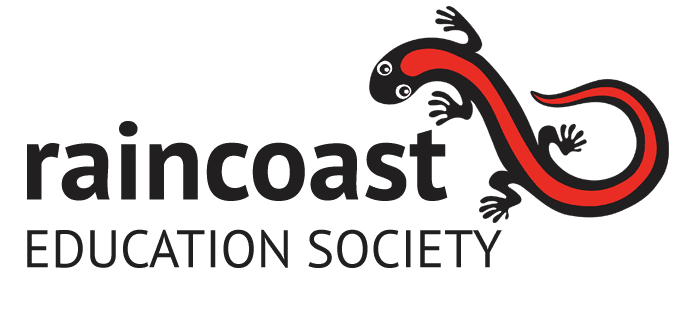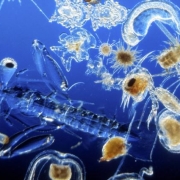Fabulous Fungi
November 1, 2003 | Raincoast Education Society
In Clayoquot Sound during the fall, typically September, October and early November, mushrooms emerge. Mushroom hunting can be an enjoyable pastime and greatly enhance your appreciation for the wonders of the rainforest. Remember the importance of fungi and be sure to walk softly of the earth!
What is a Mushroom?
A mushroom is the reproductive structure that is produced by some fungi. A fungus produces a mushroom to distribute spores (tiny microscopic ‘seeds’), which blow away on the wind or are carried off by animals. The mushroom appears on the surface of the ground or of decaying wood at certain times of years, but the bulk of the fungi organism is under the surface. Under the surface are millions of kilometres of microscopic rooting threads called mycelium. These mycelia can spread out for many metres underground and can live for many years. Some species pop up a fresh batch of mushrooms every year.
A fungus belongs to its own kingdom, separate from plants and animals. Fungi differ from plants and animals in the way they obtain their nutrients. The mycelium grows into or around the food source, secrete enzymes that digests the food externally, and then absorbs the digested nutrients.
The Ecological Function of Forest Fungi
The ecological functions of mushrooms and other fungi can be roughly classified into four categories:
1. Decomposers – Some species obtain nutrients by breaking down dead organic matter. As organisms of decay, mushrooms, and all other fungi enable organic matter to be continually recycled. A forest in which nothing rotted would starve for essential minerals and nutrients bound up in the undecomposed dead leaves and woody material.
2. Tree Helpers – Mycorrhizal fungi form symbiotic relationships with the roots of trees and woody plants. The mycelium weaves itself around the root and the resulting fungus-root is called a mycorrhiza. This relationship is mutually beneficial as the mushroom absorbs water and minerals for the tree, and the tree gives the mushroom nutrients. Trees are healthier and stronger with the benefit of this relationship. These ‘tree helper’ fungus also connect differing tree species and allow for the passing of the nutrients between trees.
3. Pathogens – Some species attack living plant matter and kill the host while extracting nutrients. The honey mushroom for example, causes a root disease in conifers which is fatal to the tree.
4. Food Source – Many of the small forest animals such as squirrels and voles rely on mushrooms for a part of their diet. Slugs and insects also use mushrooms as a food source.
If you are planning to collect wild mushrooms, please remember not to collect all of the mushrooms from any one area. Be sure to leave some behind to help sustain healthy future populations. Please refrain from picking in the Park, there are lots of other great places to find mushrooms. Also, never eat mushrooms that you are not 100% sure about, even if they smell/look tasty.
Did you know?
Although mushrooms are commonly known for their edible and medicinal properties, many people aren’t aware that they also yield a lovely range of colour-fast natural dyes!
The Nuu-chah-nulth used hollowed out bracket fungus to carry burning coals when traveling without matches.
Some mushrooms have gills that glow in the dark.
A great way to identify a gilled mushroom is by taking a spore print.
Fairy ring mushrooms are often found growing in circles or arcs on lawns and other grassy places.
Hemlock trees only live about a year if their roots are not colonized by a special fungus.



